Abstract 4/2020
Table of content
Grzegorz Krawczyk, Barbara Kos, Robert Tomanek – Trends of changes in the mobility model based on research on transport behaviors of the creative class in Polish metropolises
Wiesław Starowicz, Grzegorz Dyrkacz – Collective public transport on demand on the example of Kraków
Maciej Helbin, Olgierd Wyszomirski – Evolution of information on services in collective urban transport on the example of the Public Transport Board in Gdynia
Wojciech Bąkowski – Deficiencies in cooperation between researchers and practitioners in solving urban public transport problems
Mariusz Izdebski, Marianna Jacyna, Piotr Kisielewski – Application of the ant algorithm to determine the allocation of vehicles to urban public transport tasks
Abstracts
Grzegorz Krawczyk, Barbara Kos, Robert Tomanek
Trends of changes in the mobility model based on research on transport behaviors of the creative class in Polish metropolises
Abstract: The article presents the results of studies on mobility behaviors of the creative class carried out in the agglomerations of Warsaw, Gdańsk and Katowice. Creative class mobility and transport preferences have also been analyzed. Theoretical and practical conclusions were presented on the basis of the results of the conducted research. The creative class is willing to resign from cars but expects an increase in the quality of public transport first of all accessibility is required. The results of creative class research should be applied when creating transport policy in metropolises.
Key words: mobility, sustainable mobility, creative class
Wiesław Starowicz, Grzegorz Dyrkacz
Collective public transport on demand on the example of Kraków
Abstract: The on-demand bus service is mainly aimed at people living in sparsely populated areas, where it is highly unprofitable to maintain permanent lines. It significantly reduces passenger waiting time at a bus stop and provides easy access to interchanges of public transport lines running to the city center. It encourages the increased mobility of citizens on the outskirts of cities, especially those not yet served due to insufficient demand for regular transport. It allows to handle a larger area with fewer vehicles. It can be a perfect complement to conventional transport offer. The article, against the background of theoretical considerations about the service, presents the results of its functioning under the name TELE-BUS in Kraków. The service was launched in 2007. The results include an analysis of the variability of the volume of transport, the number of completed journeys, the average annual number of passengers carried on the journey, the average annual length of the journey and transport work.
Key words: public transport, public collective transport on demand, TELE-BUS
Maciej Helbin, Olgierd Wyszomirski
Evolution of information on services in collective urban transport on the example of the Public Transport Board in Gdynia
Abstract: Under the influence of changes in available information technologies, passengers expect better and better information about services. Information solutions used by organizers and operators of urban public transport have undergone far-reaching changes in recent years.The article presents modern applied information solutions in urban public transport. The role of information in this transport has been shown on the example of the Public Transport Board in Gdynia. In connection with the introduction in the Tri-City a modern TRISTAR traffic management system and the purchase of many modern buses and trolleybuses, the information system for passengers about the services of this organizer has been significantly developed. An important role in this system is played by websites and internet applications that are constantly improving their functionality, providing both static and dynamic information about urban public transport services. Innovative and modern information carriers and internet applications have become the basis for the evolution of transport services. It can be assumed that thanks to the Internet of Things will continue to develop applications presenting available travel methods together with all necessary information to make rational or optimal decisions in the given conditions determining transport behavior.
Key words: urban public transport, transport postulates, service-related information
Wojciech Bąkowski
Deficiencies in cooperation between researchers and practitioners in solving urban public transport problems
Abstract: Two very unfavourable processes have emerged in the functioning of urban public transport: the exploitation of used rolling stock and a continuous increase in the amount of urban transport subsidies. One of the reasons for these phenomena is the poor cooperation between the scientific community and practitioners. The article presents imperfections in the methodology of studying problems of the public transport functionning. On the other hand, it has been shown that there are imperfections in public transport management at the level of municipal authorities. The lack of changes in the approach to studying processes in urban transport by practitioners and scientists is unfavorable for the implementation of modern solutions in urban transport system.
Key words: urban transport, public transport, cooperation between researchers and practitioners
Mariusz Izdebski, Marianna Jacyna, Piotr Kisielewski
Application of the ant algorithm to determine the allocation of vehicles to urban public transport tasks
Abstract: The article describes the application of the ant algorithm in the problem of vehicle allocation to tasks in public transport. The analyzed allocation problem is a complex optimization problem that classifies it as NP-difficult. In the area of public transport issues it is a basic problem that should be solved in the process of constructing timetables and work plans for vehicles and drivers. The purpose of this publication was to develop a new optimization tool adequate to the analyzed issue of the allocation of vehicles to tasks in public transport. The presented ant algorithm is a new approach used to solve allocation issues in public transport and is the basis for further research on the development of new optimization methods in the studied problem. The developed algorithm minimizes the number of vehicles while minimizing working time and the distance traveled by the operating vehicles. A mathematical model has been developed on the issue of allocation of vehicles in public transport, i.e. decision variables, constraints and criterion functions were defined. The restrictions on the allocation result from the duration of the courses on a given business day, legal restrictions on the driver’s working time and driving time, as well as the available number of vehicles. The problem was presented in a multi-criteria aspect, where the decisive factor in assessing the effective allocation is the time and distance covered by all vehicles carrying out the assigned tasks. The article presents the general concept of the ant algorithm, which is in the process of verification on theoretical data and real databases of public transport companies.
Key words: public transport, vehicle assignment, ant algorithm
Jacek Oskarbski, Karol Żarski
Conditions for the implementation of the contraflow bus line in a reversible traffic organization
Abstract: Polish cities introduce solutions to encourage alternative – to car travel – modes of transport, including public transport, which can contribute to reducing congestion in the street network. The example is the introduction of a dedicated reversible bus lane in one of the main arteries in Gdynia. This is the first solution in Poland, which was launched at the end of last year. The main aim of the article is to present an innovative solution and to indicate its advantages and disadvantages and problems that appeared at the implementation stage. Moreover, a method of estimating the effectiveness of changes in traffic organization on the basis of field research and simulation, which was used during the process of planning improvements, has been presented.
Key words: traffic control, public transport priorities, reversible traffic

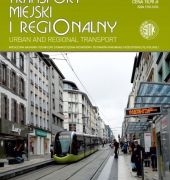 SITK RP
SITK RP 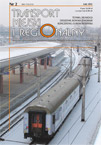 SITK RP
SITK RP 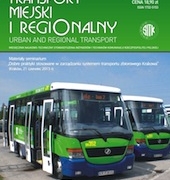 SITK RP
SITK RP 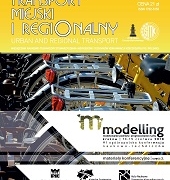
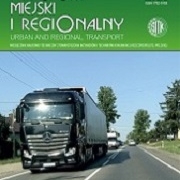
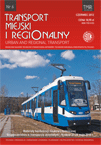 SITK RP
SITK RP 

